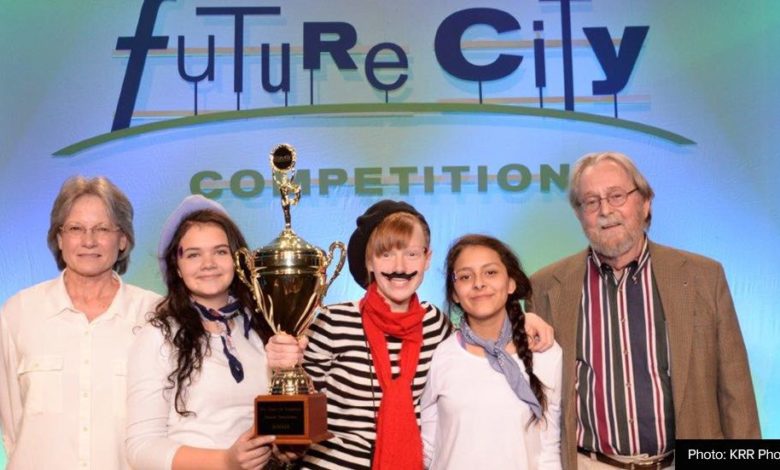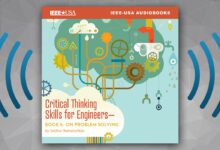
It was a moment Sonya Dillard will never forget. All her years as regional coordinator, of building the Future City Competition in Alabama, had come down to two teams standing on stage – waiting to hear who would win the grand prize.
| Future City Competition Awarded UL Education Recognition Grant In August 2015, the Future City Competition was named the grand prize winner of a $100,000 recognition grant in the Underwriters Laboratories Innovative Education Award program. Future City was cited for its “focus on advancing STEM (science, technology, engineering and math) learning through projects involving real environmental problems (E-STEM).” The essay portion of this year’s competition ” “Waste Not, Want Not” ” challenged teams to design a future waste management system. – Chris McManes |
When a school from North Texas was announced as the runner-up, it meant that the Academy for Science and Foreign Language (ASFL) of Huntsville, Ala., was the national champion. Dillard sat there, stunned at what was unfolding before her Southern eyes.
“I was in tears, and I could barely stand up to join them on stage,” Dillard said. “Words cannot express the joy and amazement I felt at that moment – as the regional coordinator – and for Alabama as a whole.
“Sweet Home Alabama was blasting through the loud speakers, and I was proud to be a Bama Girl.”
One of the prizes all Future City champions receive is a week at U.S. Space Camp in Huntsville. ASFL’s victory means it will have the shortest trip of any champion. Whereas most have to fly there to attend, ASFL student members can get their parents to drive them.
“We go past it almost every day,” eighth-grade team member Hannah White said.
Future City is an engineering design competition for middle-school students, attracting about 40,000 participants annually. Working under the guidance of an engineer and teacher, children create their own vision of a future city, first on SimCity computer software – and then constructing a scale model.
Even though the National Finals was technically held outside of Engineers Week (21-27 February) – because of hotel availability – it is one of EWeek’s cornerstone events.
The Capital Hilton, just a few blocks from the White House, hosted the Finals on 13-17 February. Thirty-seven regional-winning teams, including two from China, advanced to the nation’s capital for the final showdown.
In addition to Hannah White, 14, the Alabama team is made up of students Isabel Waring, 12 and Alexa Huerta, 13; teacher Angela Traylor and mentor Raymond Woodson, a retired aeronautical engineer.
Even if their trip to Space Camp isn’t as exciting as one to Disneyland, nothing can detract from ASFL becoming the first Future City Champion from Alabama. They won with their French city, “Villa Suave,” set in the year 2121.
Dillard, the IEEE Huntsville Section chair, said she proposed starting the Alabama regional competition in 2000, and the section has been hosting the event ever since.
“I have seen our teams go from dead last to 18th place, and then to third place last year,” said Dillard, an industrial safety engineer at the Marshall Space Flight Center in Huntsville. “Now we are the champions.”
ASFL’s prizes include $7,500 for its STEM program.
“Having watched this team and the school grow over the years,” Dillard said, “I am extremely proud of them.”
ASFL also won the IEEE-USA Best Communications System award, recognizing the best “strategic placement of a communications system that is both efficient and accurate.” The double victory marks the first time in the 16-year history of the award that a school won that award, and the grand prize, in the same year.
Marc Apter, who served as IEEE-USA president in 2013, presented both awards to ASFL.
Their winning communications system features a “Smart Life” bracelet and forehead relay that uses electrical impulses to stimulate the brain’s learning centers, thus allowing someone to understand and communicate in any language. Texting is also possible just by thinking of the message you want to send.
St. John Lutheran School of Rochester Hills, Mich., last year became the only school to win the National Finals two years in a row; and placed third this year for their 2166 city, “Egabrag.” IEEE-USA sponsors the $2,000 prize that will go to the school’s STEM program.
Harbor View Academy, winner of the North Texas title, took second place with its 2050 city “Bedford Falls.” IEEE member Jean Eason is the competition’s regional coordinator. The National Society of Professional Engineers will provide a $5,000 STEM-program scholarship to Harbor View.
The city name was based on the Jimmy Stewart classic, It’s a Wonderful Life. Lucy Metheny, the student who played the angel, concluded her team’s presentation by saying:
“Every time a bell rings, an engineer solves a problem.”
Chris McManes is IEEE-USA’s public relations manager.






